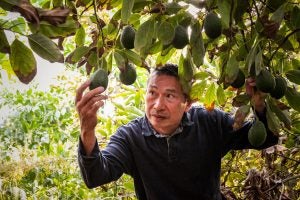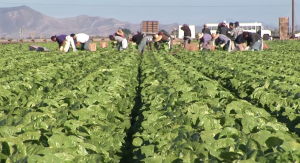The H-2A Temporary Agricultural Worker Program enables U.S. employers facing a shortage of domestic labor to hire foreign nationals for temporary or seasonal agricultural roles. An analysis by the American Immigration Council of the Department of Labor data highlights a substantial nationwide demand for H-2A workers, who play a crucial role in supporting America’s food production.
The demand for H-2A workers has risen
Between 2017 and 2022, the number of DOL-certified H-2A workers — those requested by employers and subsequently certified — increased by 64.7 percent, from 224,965 to 370,628. This sharp rise underscores the agricultural sector’s growing dependence on temporary foreign labor to fill critical positions.
However, DOL certification is just one step in the process. To begin employment in the United States, both employers and workers must also navigate the U.S. Citizenship and Immigration Services approval process. In recent years, about 80 percent of certified H-2A job requests have resulted in the issuance of temporary work visas.

Two-thirds of U.S. counties have H-2A workers
The geographic spread of H-2A requests has also widened, with the number of U.S. counties seeking these workers increasing by 35.2 percent between 2017 and 2022. By 2022, over two-thirds of U.S. counties had certified H-2A workers. The counties with the highest numbers were Monterey County, California; Moore County, North Carolina; and Yuma County, Arizona.
Most H-2A workers are concentrated in states known for major fruit and vegetable production. In 2022, Florida led with 51,000 certified workers, followed by California, Georgia, Washington, and North Carolina. Notably, Texas experienced the largest percentage increase, with the number of certified workers tripling from 3,700 in 2017 to 11,700 in 2022.
Severe labor shortage in the agricultural sector
A persistent decline in interest among U.S.-born workers in manual farm labor has exacerbated labor shortages in agriculture. The council’s analysis of American Community Survey data suggests that an aging workforce may be driving the increased demand for H-2A workers.
While the average age of all laborers in crop production rose slightly from 39.6 years in 2006 to 40.6 years in 2022, the average age among crop laborers saw a more significant increase, from 37.2 years to 41.6 years. The report indicates a decreasing proportion of young laborers in the U.S. agricultural workforce.

Hiring H2-A workers
Between 2017 and 2022, the average hourly wage for H-2A workers in the United States increased modestly from $13.65 to $14.46 (adjusted for inflation). This 5.9 percent rise reflects the growing demand for these workers, who are essential in keeping U.S. farms operational.
Farm labor contractors are playing an increasingly significant role in hiring H-2A workers. These contractors, who specialize in recruiting and hiring farmworkers, often provide housing and transportation to the farms. The share of H-2A employment managed by FLCs surged from 15 percent in 2010 to 44 percent in 2022.
As a result, FLCs are now classified as the leading industry employing H-2A workers in 2022. Following FLCs, the primary sectors hiring these workers include support activities for crop production, vegetable and melon farming, fruit and nut tree farming, and nursery and floriculture production. These H-2A workers are crucial in enabling American farmers to grow fruits and vegetables domestically, helping to reduce the nation’s reliance on imported food.
The rising demand for H-2A workers has also renewed focus on concerns regarding potential exploitation. In response, the Department of Labor introduced new regulations in 2024 aimed at protecting workers and enhancing oversight of employers.
These protections, effective June 28, 2024, include measures to increase transparency in the application process, allow agricultural workers to engage in collective action, set clear standards for termination, and prohibit employers from withholding workers’ passports and immigration documents.

High heat conditions for workers
H-2A workers often face challenging working conditions, with high heat being particularly concerning. According to the council’s analysis of Department of Labor data, 13.7 percent of certified H-2A laborers work during months when local temperatures average above 90°F (32°C). In southern states like Arizona, Georgia, New Mexico, and Texas, more than one in four certified H-2A workers are exposed to such extreme heat.
According to the Council’s heat map, the counties with the highest numbers of certified H-2A workers are often in some of the hottest regions of the country, putting these farm laborers at increased risk of dangerous working conditions.
»Related: Black Mississippi farmworkers settle discrimination, H-2A lawsuit


